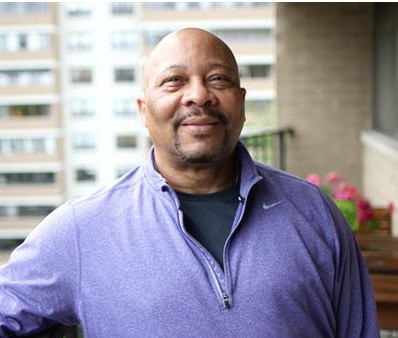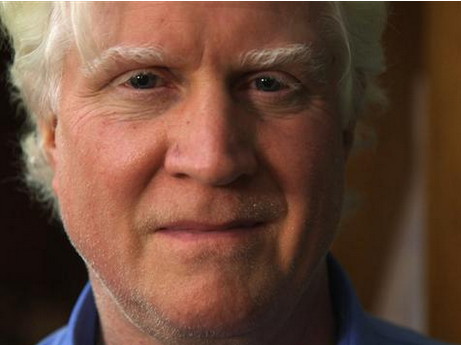Cancer Super-Survivors Use Their Own Bodies To Fight The Disease (#GotBitcoin?)

Cancer Super-Survivors Use Their Own Bodies To Fight The Disease (#GotBitcoin?)
Collaborations Provide Major Advance in Cancer Treatment
Researchers may have solved a puzzle about which patients will benefit from immunotherapy. Cancer Super-Survivors Use Their Own Bodies To Fight The Disease (#GotBitcoin?)
A collaboration between an immunologist helping his stepmother fight cancer and the oncologist who treated her led to a discovery that could help many more patients benefit from a transformative new therapy.
A new class of drugs called checkpoint inhibitors works by releasing a molecular brake that stops the immune system from attacking tumors. So-called immunotherapy has been approved for several types of cancers and found to extend lives of patients with advanced disease for many years. The problem is that for most patients immunotherapy doesn’t work.
The researchers, from University of California, San Francisco, said they identified a unique type of immune-system cell that “robustly” predicts whether patients will respond to one of the medicines-an achievement has the potential to significantly expand the number of cancer patients who benefit from checkpoint inhibitors.
The new discovery is based on a high-tech analysis of melanoma tissue from 40 patients treated with a checkpoint inhibitor from Merck And Co. called Keytruda, which targets an immune-system brake called PD-1. Although researchers say it will take further research to determine its value in treating patients, the finding offers fresh insight into the complex relationship between the immune system and tumor cells.
“This tells us a lot of important biology,” said Jedd Wolchok, chief of the melanoma and immunotherapies service at Memorial Sloan Kettering Cancer Center, New York, who wasn’t involved with the research. “It fits with many hypotheses many of us have had about who these treatments work best in.” A report on the finding was published online August 15 in the Journal of Clinical Investigation.
The discovery might not have occurred at all had two researchers not met. In 2012, Michael Rosenblum, a physician-scientist who runs a basic-science immunology lab at UCSF, learned his stepmother, Jackie Rosenblum, now 65, had been diagnosed with a rare form of advanced melanoma in her lung, a recurrence of cancer that originally appeared as a skin lesion and had been removed a few years earlier. She was given six months to live.
Dr. Rosenblum had heard about Adil Daud, another UCSF clinical researcher who was treating patients with skin cancer, and the exciting results Dr. Daud was seeing in clinical trials with checkpoint inhibitors. “I cold-called him,” Dr. Rosenblum says. The two men were both in UCSF’s dermatology department, although Dr. Rosenblum interest is in inflammatory skin diseases, not cancer.
After initial conversations between the two researchers, Ms. Rosenblum flew in from her home in North Carolina to see Dr. Daud. He treated her initially with Yervoy, a checkpoint inhibitor marketed by Bristol-Myers Squibb Co. that targets an immune-system brake called CTLA-4. She stopped taking it after developing colitis, one of that drug’s potential serious side effects.
In June 2013, Dr. Daud enrolled her in a clinical dose-escalation trial in which she would be treated with Merck’s Keytruda, then known as pembrolizumab.
The two scientists’ collaborated on research that focuses on PD-1, a protein that appears on the surface of immune cells and the target of the two most popular checkpoint drugs, Keytruda and Bristol-Myers’s Opdivo. A biomarker for PD-1 already exists but it has limitations: Patients whose tumors have high levels of a PD-1 related protein called PD-L1 appear to have a better response to therapies targeting PD-1. But some patients with low PD-L1 levels also benefit-meaning that it can help guide some treatment decisions but isn’t useful for ruling out anti-PD-1 therapy.
Dr. Rosenblum’s lab had developed a technique for analyzing immune cells in tumors and other tissue that he says is more comprehensive than conventional methods. At the beginning of their collaboration he invited Dr. Daud to “send me some samples.”
The prevailing theory of how checkpoint inhibitors work is based on evidence that immune-system fighters called CD8 cells, which are normally primed to kill enemy cells, initially see and infiltrate tumors but can end up in a state of chronic activation, too exhausted to mount an effective attack.
Using the lab’s laser-based flow cytometry technology, Dr. Rosenblum and his colleagues identified a candidate CD8 cell that had infiltrated tumors marked by levels of not only PD-1 but also of a second immune-system brake called CTLA-4.
The researchers analyzed results of a study involving Keytruda before it was approved. They looked at the CD8 cells that had infiltrated the melanoma tumors of 20 patients treated with the drug and found that if at least 30% of those cells were marked by PD-1 and CTLA-4, the patient responded to treatment. When fewer than 20% of the infiltrated cells had those markers, not one patient responded.
They did a second similar study on 20 more patients and got the same result. Results varied for patients whose CD8 cells fell between 20% and 30%, making them prime candidates, Dr. Daud suggested, for a combination immunotherapy regimen to potentially increase their chances of a response.
Further analysis showed that the anti-PD1 drug reactivated the exhausted CD8 cells, and when they were in sufficient numbers, they were able to mount an effective attack on the tumor.
Memorial Sloan Kettering’s Dr. Wolchok called the study “a really important piece of work,” but cautioned that among other things, it needs to be further validated in more patients. Dr. Rosenblum acknowledged that few hospitals or labs are equipped to perform the analysis, suggesting further work is necessary for it to be easily adapted to patient care.
But the findings did show that the particular CD8 cells identified “are the guys that are doing all the work to kill the tumor,” Dr. Rosenblum noted. Researchers are already exploring whether it’s possible to retrieve such cells from the tumor, expand them into huge quantities outside the body and infuse them back into patients-possibly using a PD-1 inhibitor-to increase the number of patients who respond.
As for Ms. Rosenblum, 12 weeks after she began treatment with Keytruda, a CT scan showed that her tumors had shrunk by 70%. She recalls Dr. Daud delivering the news to her by phone while she was on a train. He told her she was “a golden child”; she burst into tears. Her tumors ultimately disappeared. She stopped treatment in June of 2014, about a year after she started, and remains free of any evidence of disease.
How the Promise of Immunotherapy Is Transforming Oncology
More than one-third of advanced melanoma patients treated in a study of Bristol-Myers Squibb Co.’s Opdivo have survived at least five years, researchers said, providing fresh evidence of the durable benefit cancer immunotherapy agents have for some patients.
The study followed 107 patients who were enrolled in an early trial of the drug, which was approved for melanoma by the U.S. Food and Drug Administration in 2014. Thirty-four percent of the participants, all of whom had failed on other drugs, were still alive five years after treatment.
“This is a new benchmark for melanoma,” said F. Stephen Hodi, director of the Melanoma Center at Dana-Farber Cancer Institute, Boston, and an investigator at Harvard Medical School’s Ludwig Center.
Dr. Hodi presented the findings at the annual meeting of the American Association for Cancer Research in New Orleans. The AACR said a National Cancer Institute database shows that the five-year survival rate for patients diagnosed with advanced melanoma between 2005 and 2011 was 16.6%.
Opdivo is one of three so-called checkpoint inhibitors currently on the market. Blocking the checkpoints releases molecular brakes, thus allowing immune system cells called T cells to attack cancer. Opdivo, and a rival called Keytruda from Merck & Co. target a brake called PD-1. (Both are approved for melanoma and for lung cancer.)
The first checkpoint inhibitor to reach the market was Yervoy, also from Bristol-Myers. It targets a brake known as CTLA-4 and in a previous analysis was shown to result in long-term survival in about 22% of melanoma patients.
The Yervoy results, and now the new findings for Opdivo, are especially significant, oncologists said, because they suggest, in each case, patients who survive a certain length of time—three years for Yervoy and about four years for Opdivo—are highly unlikely to relapse. That is essentially an unheard-of result in advanced cancer. The treatments appear to have enabled their immune systems to eradicate or take control of their tumors.
“People who have good responses really seem to be protected against their disease returning in many cases,” said Louis M. Weiner, director of the Georgetown Lombardi Comprehensive Cancer Center, Washington, D.C., who wasn’t involved in the studies. “This is a mark of distinction in immunotherapy.”
Still, two-thirds of melanoma patients aren’t as lucky. But the success that has been achieved has sparked a wave of interest in cancer immunotherapy treatments among drug companies. Hundreds of clinical trials involving such agents, either alone or in combination with other drugs, are under way. The aim is to try to extend survival in more patients and find effective regimens against more types of cancer.
The new study is the first to look at long-term survival for an anti-PD-1 agent. Common side effects included a rash, a cough, and in serious cases, immune system attacks on healthy organs such as a the lung and the colon.

Tom Telford’s stomach ached. The New York City teacher had been drinking cup after cup of coffee as he labored to finish year-end grading and coach his high-school baseball team through the playoffs. He worried he might have an ulcer.
When school let out, though, Mr. Telford looked forward to relaxing on a 25th anniversary cruise with his wife. But once in the Caribbean, he struggled to swim and climbing from one deck to another exhausted him. Back at home, he collapsed while running a TV cable in his bedroom.
His family doctor told him he had lost two pints of blood. Further tests revealed a tumor the size of a quarter on his small intestine. He had surgery at Memorial Sloan Kettering Cancer Center, followed by months of chemotherapy. But the disease spread to his liver and kidneys. The diagnosis: Stage 4 melanoma, a skin cancer typically fatal within a year.
“Death is not an option,” he told his doctor.
Nine years later, against all odds, Mr. Telford is still alive. What saved him was an experimental immunotherapy drug—a medication that unleashes the body’s own immune system to attack cancer.
When his tumors began melting away more than eight years ago, Mr. Telford’s good fortune was largely an anomaly amid a mostly dreary landscape for advanced cancer. But his remarkable survival caught the attention of researchers, who began to realize that the way immunotherapy drugs were affecting tumors was unlike almost anything seen with conventional treatments.
Today Mr. Telford is among a growing group of super-survivors who are transforming the world of oncology. In both total numbers and duration of survival, they are charting new territory. And they are reviving hopes that the long-maligned idea of enlisting the power of the immune system against cancer may help to turn the tide against some of the most lethal and resistant forms of the disease.
Related Article:

I Love this article…..
Thanks